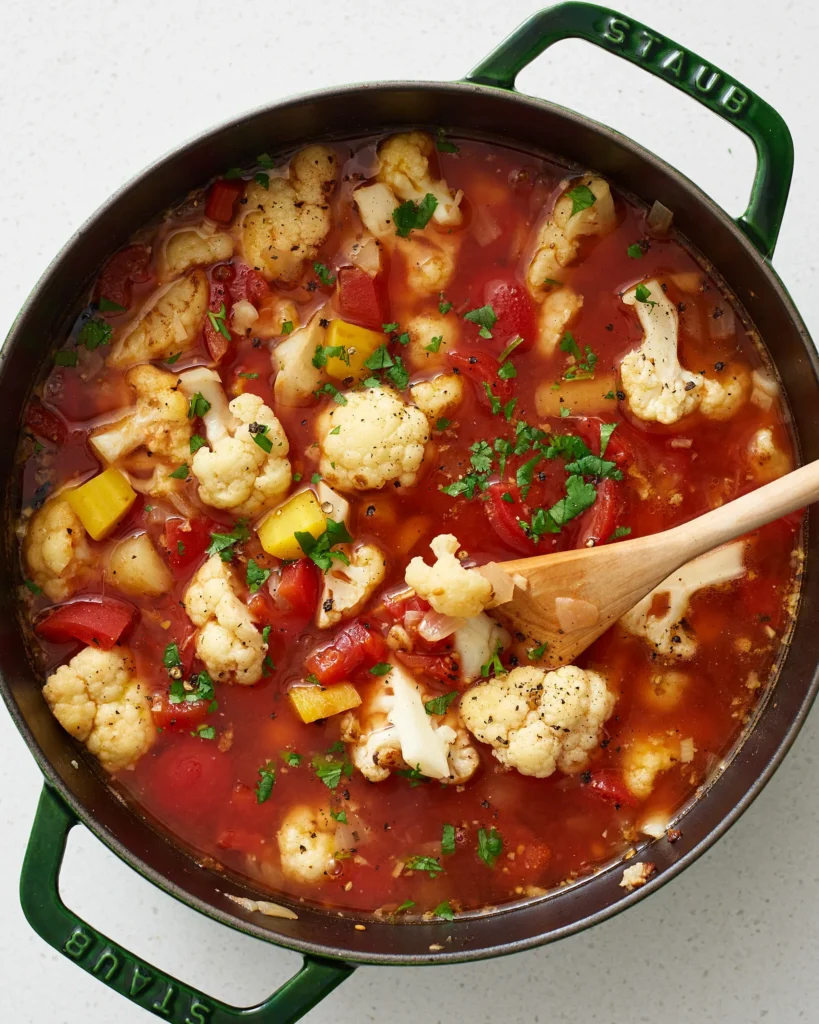A rich and flavorful vegetable broth is the cornerstone of many delicious soups, stews, and sauces. Unlike store-bought versions that may contain preservatives, making veg broth at home ensures a fresh, nutrient-packed, and customizable base. With just a handful of vegetables, herbs, and spices, you can create a broth that elevates any dish, from simple weeknight soups to gourmet creations. This guide will walk you through a 5-step process to prepare the perfect veg broth for soups.
Step 1: Gather Fresh Ingredients

The flavor of your broth depends largely on the quality and variety of vegetables, herbs, and aromatics you choose.
Essential Ingredients:
- Onion – 1 large, quartered
- Carrots – 2 medium, chopped
- Celery – 2 stalks, chopped
- Garlic – 2–3 cloves, smashed
- Leeks – 1, sliced (optional, adds sweetness)
- Tomatoes – 1–2 medium, halved
- Mushrooms – ½ cup, sliced (optional, adds umami)
Herbs and Spices:
- Bay leaves – 1–2
- Fresh parsley – a handful
- Thyme – 1–2 sprigs (or ½ tsp dried)
- Black peppercorns – ½ tsp
- Salt – to taste (optional, can adjust when using broth in recipes)
Optional Enhancers:
- Bell peppers – 1 small, chopped
- Fennel bulb – ½, chopped
- Green beans, zucchini, or cabbage scraps
- Celery leaves or carrot tops for extra flavor
Tip:
Use fresh, organic vegetables whenever possible. Save vegetable peels, ends, and scraps from prior cooking to reduce waste and enhance broth flavor.
Step 2: Prepare Vegetables and Herbs

Proper preparation ensures maximum flavor extraction and avoids overcooked or bitter notes.
Instructions:
- Wash all vegetables thoroughly to remove dirt and pesticides.
- Roughly chop vegetables into large pieces; no need for perfect cuts as they will be strained later.
- Lightly crush garlic cloves to release flavor.
- Tie delicate herbs like parsley and thyme in a bundle (bouquet garni) for easy removal after cooking.
Tip:
Avoid adding starchy vegetables like potatoes or sweet potatoes—they can make the broth cloudy. Stick to aromatic vegetables and herbs for a clear, flavorful liquid.
Step 3: Sauté or Roast Vegetables (Optional for Extra Flavor)

Sautéing or roasting vegetables before simmering can deepen the flavor and create a richer broth.
Instructions:
- Heat 1–2 tablespoons of oil in a large pot over medium heat.
- Add onions, carrots, and celery. Sauté for 5–7 minutes until slightly caramelized.
- Optional: Roast vegetables in a preheated oven at 200°C for 15–20 minutes for a more concentrated, slightly sweet flavor.
- Add garlic and sauté for 1–2 minutes until fragrant.
Tip:
Caramelization enhances natural sugars in vegetables, giving your broth a rich, savory depth that boosts soups, risottos, and sauces.
Step 4: Simmer the Broth

Simmering allows vegetables and herbs to release their flavors into the water, creating a nutrient-rich, aromatic liquid.
Instructions:
- Transfer sautéed or raw vegetables to a large stockpot if needed.
- Add 8 cups of water (or adjust quantity based on desired broth strength).
- Add herbs, bay leaves, and peppercorns.
- Bring the mixture to a gentle boil, then reduce heat to low and simmer uncovered for 30–60 minutes.
- Occasionally skim off any foam or impurities that rise to the surface.
Tip:
Simmering slowly allows maximum extraction without breaking down vegetables into mush. Covering partially prevents too much evaporation while allowing flavors to concentrate.
Step 5: Strain, Store, and Use

Straining ensures a clear, smooth broth ready for soups, sauces, and cooking.
Instructions:
- Remove from heat and let the broth cool slightly.
- Use a fine-mesh sieve or cheesecloth to strain the liquid into a clean container, discarding solids.
- Taste the broth and adjust salt if needed.
- Store in airtight containers in the fridge for up to 5 days, or freeze in portions for up to 3 months.
Tip:
For maximum versatility, freeze broth in ice cube trays to easily use small amounts for sauces or recipes. Homemade broth can also serve as a base for gravies, risottos, or as cooking water for grains.
Extra Tips for Perfect Veg Broth
- Avoid Overcooking: Prolonged simmering can make the broth bitter, especially with cruciferous vegetables like broccoli or cabbage.
- Use Aromatics Wisely: Leeks, garlic, mushrooms, and fennel add umami and depth.
- Save Scraps: Onion skins, carrot tops, and celery leaves enhance flavor—just ensure they are clean.
- Clear Broth: Avoid potatoes or starchy vegetables; keep broth clear by simmering gently and straining carefully.
- Flavor Variations:
- Indian Twist: Add curry leaves, cumin seeds, and coriander powder.
- Mediterranean Twist: Include rosemary, thyme, and a splash of olive oil.
- Asian Twist: Add ginger, star anise, and a splash of soy sauce.
Why Veg Broth is Essential
- Foundation for Recipes: Veg broth enhances soups, stews, sauces, grains, and braises.
- Healthy and Nutrient-Rich: Packed with vitamins, minerals, and antioxidants from vegetables.
- Low-Calorie Flavor: Adds taste without adding fat or heavy ingredients.
- Customizable: Flavor can be adjusted with herbs, spices, or vegetable combinations.
- Cost-Effective: Homemade broth reduces reliance on store-bought, often expensive and salty alternatives.
Popular Uses for Veg Broth
- Vegetable Soup: Use as a base and add cooked or raw vegetables, noodles, or grains.
- Risotto: Replace water with veg broth for creamy, flavorful risotto.
- Stews and Curries: Enhance flavor of Indian, Asian, or Mediterranean curries.
- Grain Cooking: Cook rice, quinoa, or couscous in broth instead of water for extra flavor.
- Sauces and Gravies: Use as a base for light, healthy sauces instead of cream or butter.
Conclusion
Preparing vegetable broth at home is simple, cost-effective, and immensely rewarding. By following these five steps—gathering fresh ingredients, preparing vegetables and herbs, sautéing or roasting, simmering, and straining—you can create a rich, flavorful base that elevates any dish.
Homemade veg broth is versatile, nutritious, and customizable to your taste preferences, whether you prefer a classic, Indian, Mediterranean, or Asian flavor profile. It can be stored in the fridge or freezer, ensuring a ready-to-use base for soups, sauces, and meals at any time.
With this guide, you can enjoy the full taste and health benefits of a fresh, homemade vegetable broth, enhancing your cooking and making every soup or dish more vibrant and flavorful.





